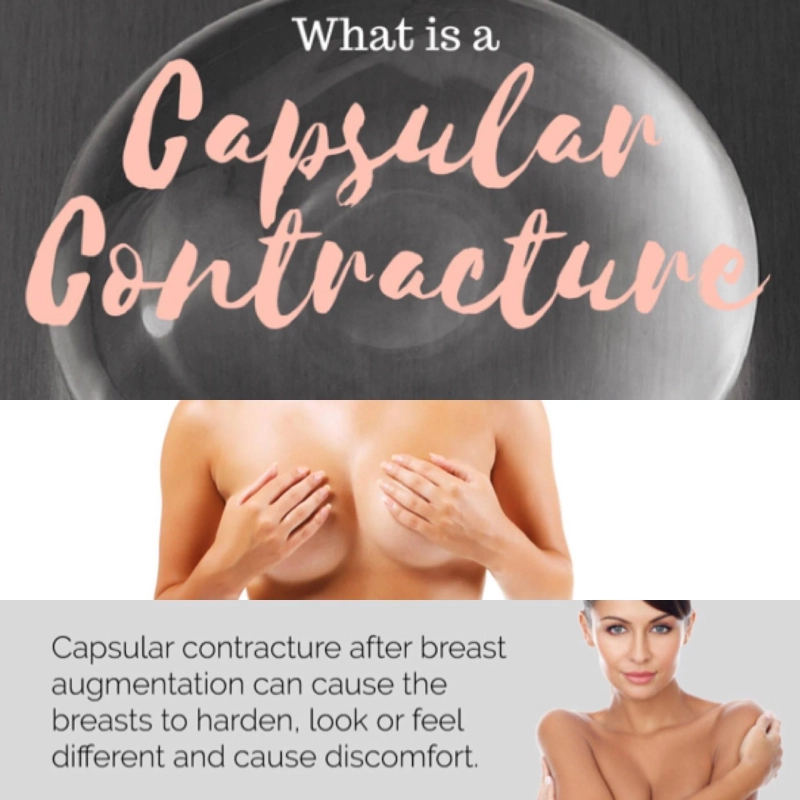One well-known cosmetic procedure that helps to improve the size and contour of the breasts is breast augmentation. As attractive as it may be, however, some patients suffer breast augmentation capsular contraction, a usual complication that produces pain, firmness, and distortion of the implant.
This is an unfortunate condition that can be distressing and even look like a failed breast augmentation. There are different treatment alternatives, and not all are surgical. Lots of non-surgical treatments are used to eliminate symptoms and get comfort back. In this article, you are going to learn how to treat breast implant augmentation complications without surgery.
What Is Breast Augmentation Capsular Contraction?
After breast implant surgery, the body will naturally form a scar tissue capsule around the implant. This is the normal healing process. The capsule will tighten and contract in some instances, compressing the implant. This causes pain, distortion, or firmness.
Capsular contracture is one of the most common breast implant augmentation complications, and it may occur months or even years post-surgery.
What are the Symptoms?
Identifying early warning symptoms can help you deal with a problem before it gets worse. Signs and symptoms of breast augmentation capsular contraction are:
★ Breast tightness or firmness
★ Changes in shape that can be seen
★ Discomfort or pain
★ Implants protruding higher than normal
★ Hard nodules around the implant
If you notice any of these, get an expert's help immediately. Mild contraction at an early stage usually heals easily without surgery.
Causes of Capsular Contraction
Some of the following reasons may contribute to this condition:
➢ Infection or germs in the area of the implant
➢ Surgical incompetence (often noticed in failed breast augmentation surgeries)
➢ Postoperative hematoma or seroma
➢ Rupture or leakage of the implant
➢ Genetics and the immune system
Identifying the cause will aid in deciding on the best course of treatment.
Non-Surgical Treatments That Work
The following are some effective, non-surgical methods for treating breast augmentation capsular contraction.
1. Ultrasound Therapy
This is one of the most widely recommended nonsurgical treatments. The capsule tissue is gradually loosened and softened by ultrasound waves penetrating it. It enhances circulation and decreases inflammation. Recurrent sessions can slowly restore implant softness and diminish visible distortions.
2. Massage Therapy
A gentle massage with guidance might help keep the capsule from being too tight. Your professional may instruct you in certain techniques or refer you to one who has experience in post-surgical therapy. Massage should always be performed under guidance, particularly when you already manifest signs of breast implant augmentation complications.
3. Radiofrequency or Laser Therapy
These treatments trigger collagen breakdown and increase skin elasticity. Clinics apply them as part of a full treatment plan in some instances. They are effective in mild to moderate conditions and generally involve little discomfort.
4. Anti-Inflammatory Medications
Non-steroidal anti-inflammatory drugs (NSAIDs) can decrease swelling and pain. Certain practitioners also suggest vitamin E or other dietary supplements, but these must be used under a doctor's guidance. This approach is most effective when coupled with physical therapy or ultrasound treatment.
5. Lymphatic Drainage Massage
Lymphatic drainage maintains natural removal of fluids and reduces swelling in the areas around implants. It also enhances tissue health and prevents aggravation of the contraction. It's most commonly used in combination with other treatments to enhance its effectiveness.
How Can You Avoid Capsular Contraction?
You can't always avoid it, but you can minimize your risk by:
● Selecting a qualified, board-certified surgeon
● Strict adherence to post-surgery instructions
● Regular follow-ups
● The use of high-quality implants
● Avoiding trauma or infection in the implant site
When to Consider Surgery?
If the non-surgical treatments do not alleviate the symptoms, surgery may be required. This typically entails the removal or replacement of the implant and capsule. Yet, most individuals can control or even reverse early-onset breast augmentation capsular contraction without having surgery.
Final Thoughts
Capsular contraction of the breast augmentation is an infuriating but manageable condition. You do not need to go to the operating room. Non-surgical treatments, such as ultrasound therapy, massage, and medicine, can provide significant comfort.
Always consult with qualified experts to guarantee safe and effective treatment. Don't panic if you think you may be experiencing signs of a botched breast augmentation. You may only need non-surgical treatments to return to your confidence and comfort. For the best non-surgical treatments, connect with Aspenaftersurgery. Their experts will help you provide the appropriate solution for your problem.


